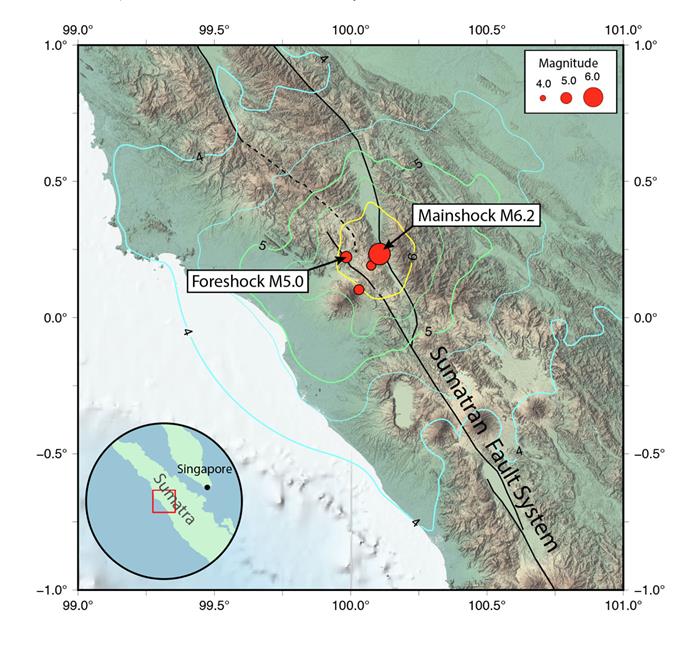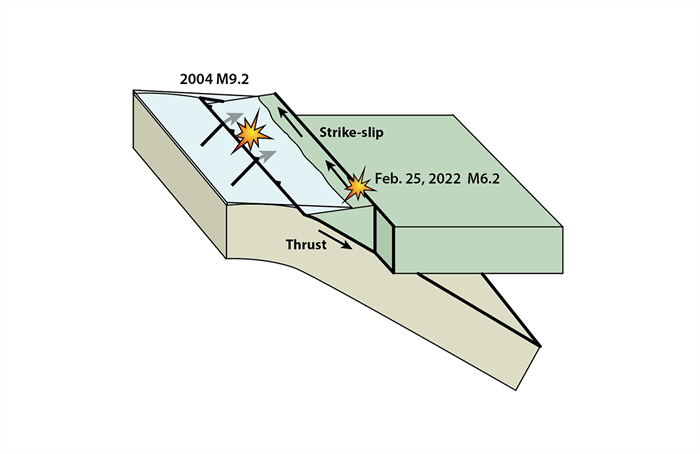A strong earthquake struck near Bukittinggi in west Sumatra, Indonesia, on 25 February 2022 at approximately 9:38am Singapore time. According to the United States Geological Survey, the Mw 6.2 earthquake occurred at a depth of 12 kilometres (km) and was preceded by a Mw 5.0 foreshock a few minutes earlier. The earthquake was widely felt in the region, including in Singapore.
The strike-slip fault (horizontal slip) that ruptured during today’s event is the 1,900 km-long Sumatran fault, which runs along the entire island of Sumatra. "Although the Sumatran fault is very long, only a small part of it slipped in this earthquake," said Assistant Professor Judith Hubbard, a principal investigator at the Earth Observatory of Singapore who studies structural geology with a focus on earthquake hazards. "The rupture is likely about 10 km-long with about 10 centimetres of slip on average and this segment of the fault is located about 400 km from Singapore."

Map showing the location of the 25 February 2022 Mw 6.2 earthquake and of the foreshock that occurred a few minutes earlier. The contours show ground shaking intensities. More information about the intensities can be found on the USGS website: https://www.usgs.gov/programs/earthquake-hazards/modified-mercalli-intensity-scale (Source: Kyle Bradley/Earth Observatory of Singapore)
The Sumatran fault has produced many large earthquakes in the past up to Mw 7.7. The fault has developed due to subduction off the west coast of Sumatra, where the Indo-Australian plate is sinking below the Sunda plate. Although the convergence of tectonic plates at subduction zones typically generates thrust faulting, the subduction west of Sumatra is not perpendicular to the plate boundary and requires horizontal slip. Earthquakes on the Sumatran fault take up part of the horizontal plate motion.

Diagram showing the location of Sumatran fault relative to the subduction zone (Source: Kyle Bradley/Earth Observatory of Singapore)
The shaking from today’s event was felt across Singapore, especially in multi-storey buildings, according to reports on social media. "The widely-felt shaking in Singapore is likely due to the matching between the resonance frequencies of the buildings and the peak energy frequency of the earthquake," said Asst. Prof Wei Shengji, a principal investigator at the Earth Observatory of Singapore who uses a range of seismological techniques to understand the plate tectonics and earthquakes. When tall buildings resonate, people on the higher floors are more likely to feel the swaying.
Singapore is not immune to earthquake shaking, with much of the shaking being due to earthquakes in Sumatra, like this one. "Today’s event is a reminder that Singapore can feel earthquakes, so people should be prepared for this hazard," said Asst. Prof Hubbard.